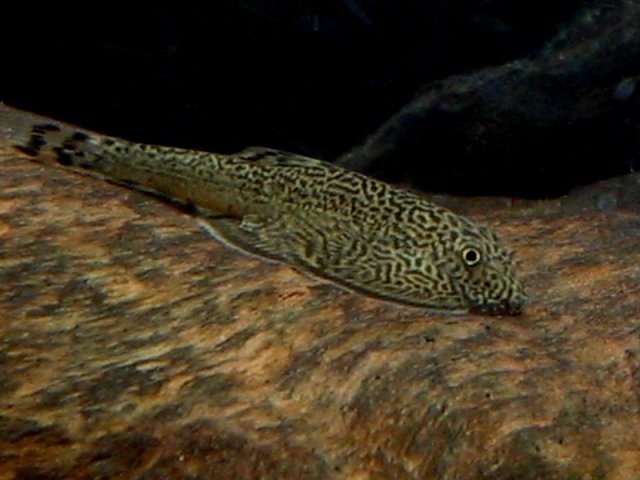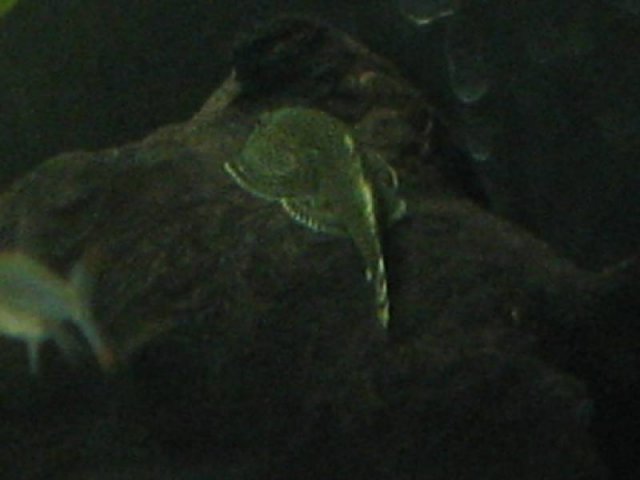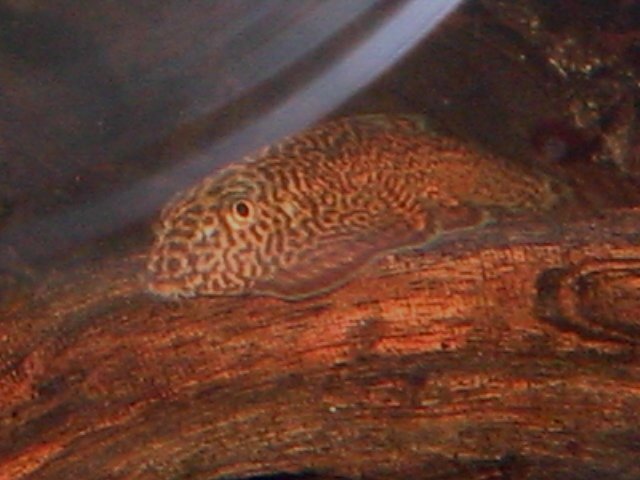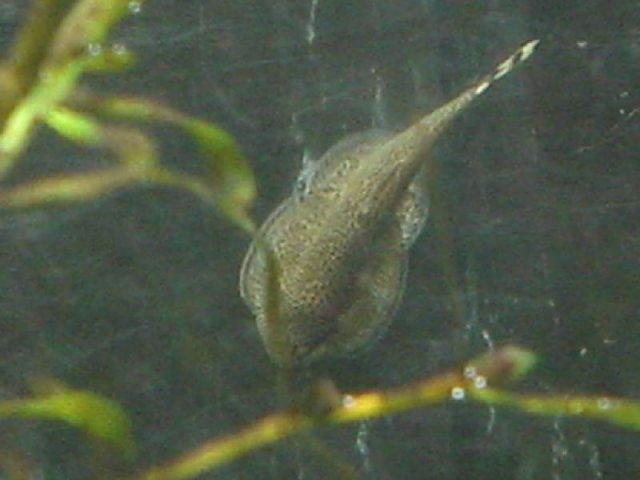- Sep 21, 2006
- 21,430
- 13
- 0
- Real Name
- Paul
Origin:
China
Size:
Hillstream loaches can reach to 2-3 inches maximum size although smaller in captivity.
Water Conditions:
These fish are not fussy with water conditions although 7.0-8.0 is best.
Temperature:
65-76 degrees Fahrenheit. Higher than that can result in inactivity and reduction of oxygen supply.
Care:
There are several species of hillstream loaches available all around Asia, however, details will be posted for specifics. They are easily distinguished from Gastromyzons by their smaller mouth shape and wider body appearance.
This fish has long been called in several other names including Borneo Sucker, Stingray Pleco, Butterfly Pleco and China Sucker. While they do closely resemble the plecos, the truth is they are neither plecos nor can they be considered as catfish. They are loaches thus falling under the cyprinids category.
Hillstream loaches inhabit fast-flowing streams with boulders and this must be replicated in captivity to satisfy their needs. In short, a tank with substrate and smooth rocks coated with algae make a suitable environment for them. This design (click here) by Martin Thoene is definitely a must if you want to keep these fish successfully. Plants may be recommended as well to ensure excellent water quality as this fish actually prefers very clean water as evident in their habitat. Provide powerful currents and surface movements to ensure very high oxygen supply and continuing comfort in their home. They will not last long enough if the oxygen is greatly depleted or if any of their requirements are not met at all.
On tank maintenance, I would recommend doing 20-30% water change on daily basis. Small frequent water changes are far more safer for this fish than big water changes at different time intervals as they will not be happy with the tremendous changes in water conditions.
Lastly, it has been acknowledged so far that hillstream loaches can last as long as five years provided they are not deprived of the requirements that will allow them to thrive in your tank happily.
Tankmates:
Tankmates should be able to tolerate very low temperatures and fast flowing currents. White cloud mountain minnows and several species of danios and devarios make suitable tankmates along with peaceful Schistura species and other hillstream loach species.
Foods:
Diet consists mostly of algae and aufwuches which harbor the algae. This, in short, makes us think hillstream loaches are indeed omnivores. They have been fed so far with bloodworms, mosquito larva, shrimps and plenty other foods. Small artificial foods will also be appreciated by this fish.
Tip: In order to ensure the continuous supply of algae, the use of sunlight, fertilizers/fish food and dechlorinated tap water in a bucket/spare aquarium (not the main river aquarium!) are very important and will be sufficient enough to grow algae in a few days. Simply place a few rocks inside the bucket of water. Put a pinch of fish food or dose it with fertilizer designed for aquarium plants. Once you are done with the above, place the bucket under direct sunlight. Wait patiently for a few days and you should expect green algal growth among the rocks. Alternately use the rocks by placing a few ones at a time in the main aquarium for the hillstream loaches to feed. Return the rocks to the bucket and use the others thus ensuring you will not run out of the supply of algae which is very important to the well being of the fish.
Sexing:
Sexing is not very easy.
Breeding:
No actual breeding behavior is reported currently.




China
Size:
Hillstream loaches can reach to 2-3 inches maximum size although smaller in captivity.
Water Conditions:
These fish are not fussy with water conditions although 7.0-8.0 is best.
Temperature:
65-76 degrees Fahrenheit. Higher than that can result in inactivity and reduction of oxygen supply.
Care:
There are several species of hillstream loaches available all around Asia, however, details will be posted for specifics. They are easily distinguished from Gastromyzons by their smaller mouth shape and wider body appearance.
This fish has long been called in several other names including Borneo Sucker, Stingray Pleco, Butterfly Pleco and China Sucker. While they do closely resemble the plecos, the truth is they are neither plecos nor can they be considered as catfish. They are loaches thus falling under the cyprinids category.
Hillstream loaches inhabit fast-flowing streams with boulders and this must be replicated in captivity to satisfy their needs. In short, a tank with substrate and smooth rocks coated with algae make a suitable environment for them. This design (click here) by Martin Thoene is definitely a must if you want to keep these fish successfully. Plants may be recommended as well to ensure excellent water quality as this fish actually prefers very clean water as evident in their habitat. Provide powerful currents and surface movements to ensure very high oxygen supply and continuing comfort in their home. They will not last long enough if the oxygen is greatly depleted or if any of their requirements are not met at all.
On tank maintenance, I would recommend doing 20-30% water change on daily basis. Small frequent water changes are far more safer for this fish than big water changes at different time intervals as they will not be happy with the tremendous changes in water conditions.
Lastly, it has been acknowledged so far that hillstream loaches can last as long as five years provided they are not deprived of the requirements that will allow them to thrive in your tank happily.
Tankmates:
Tankmates should be able to tolerate very low temperatures and fast flowing currents. White cloud mountain minnows and several species of danios and devarios make suitable tankmates along with peaceful Schistura species and other hillstream loach species.
Foods:
Diet consists mostly of algae and aufwuches which harbor the algae. This, in short, makes us think hillstream loaches are indeed omnivores. They have been fed so far with bloodworms, mosquito larva, shrimps and plenty other foods. Small artificial foods will also be appreciated by this fish.
Tip: In order to ensure the continuous supply of algae, the use of sunlight, fertilizers/fish food and dechlorinated tap water in a bucket/spare aquarium (not the main river aquarium!) are very important and will be sufficient enough to grow algae in a few days. Simply place a few rocks inside the bucket of water. Put a pinch of fish food or dose it with fertilizer designed for aquarium plants. Once you are done with the above, place the bucket under direct sunlight. Wait patiently for a few days and you should expect green algal growth among the rocks. Alternately use the rocks by placing a few ones at a time in the main aquarium for the hillstream loaches to feed. Return the rocks to the bucket and use the others thus ensuring you will not run out of the supply of algae which is very important to the well being of the fish.
Sexing:
Sexing is not very easy.
Breeding:
No actual breeding behavior is reported currently.




Last edited:





